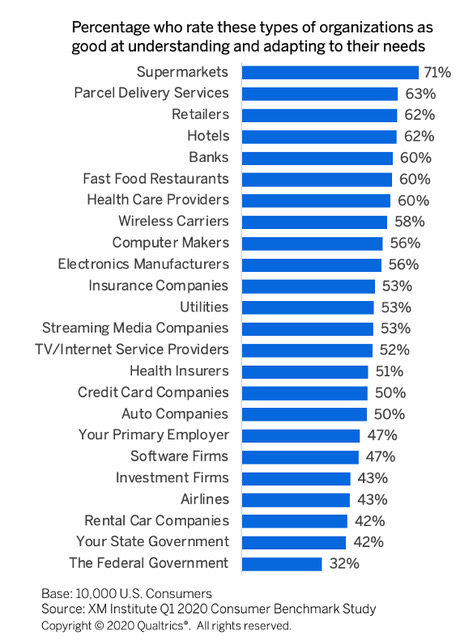By Hannah Burn & Jill Leyden
When the pandemic took center stage, governments were forced to change what happens behind the scenes. Fragile systems were put under a magnifying glass, revealing a stark contrast between organizations that adapted and those that didn’t. We saw call centers struggle to keep up with call volumes, people waiting weeks and weeks to hear back about unemployment checks, and some services shutting down all customer service, simply because we did not have the systems in place.

What we don’t hear enough about, is how governments rose to the challenge. Almost overnight, we witnessed a revolution in civic technology that brought out the best in government innovation. Across the country, governments:
- Stood up fully digital contact tracing
- Created remote inspection programs
- And transitioned entire organizations to virtual, remote work in mere days
Behind each of these accomplishments lies one simple key to success: governments adapted to customer needs at scale, and in real time.
Now, to the casual observer, that subtle shift may go unnoticed. But, as anyone who has worked in government knows, it’s not that simple. On the contrary, government consistently ranks at the bottom of industries who successfully adapt to people’s needs.
How Organizations (Don’t) Adapt to People’s Needs

And, there are good reasons why:
- Regulations make services more complex than they should be
- Legacy, insufficient systems don’t give people the data they need to make decisions
- And, the very design of government protects against rapid change
All of which can make it difficult for governments to prioritize people’s needs — their experience — over things like compliance.
Reflecting on what enabled governments to respond to customer needs quickly while navigating the COVID-19 pandemic, one approach lies at the center: human-centered design.
Governments who adapted listened to their customers and employees, understood how their experiences varied, and identified clear needs, like:
- Help me get things done without having to make in person visits so I can stay safe
- Give me the information I need about public health risks so I can make informed decisions
- Help me meet my urgent needs so I can pay rent, get food, and keep my family safe
Then, they designed customer-centered solutions to meet those needs rapidly. And, in many cases, it worked! Remember how surprised people were with the success of the free at-home COVID test website?
It’s one thing to rapidly respond to customer needs when the entire country is going through a big, massive experience. It’s quite another thing to embed that muscle into daily operations, especially when the technology, the constraints, and the resources have not shifted – or at least not as quickly.
Governments who are trying to sustain that innovation beyond the pandemic are grappling with similar questions:
- How can we continue to hear customer and employee needs, when we aren’t going through a shared experience?
- How can we do that at scale and in real time so we aren’t relying on special projects or external consultants?
- And, how can we build the muscles internally to design for customer needs?
For many governments, the answer comes down to: building human centered design competency, creating a culture that prioritizes experience, and leveraging technology to identify customer and employee needs and take action on them.
Now that answer isn’t easy. But the good news is, there are a lot of tools and resources to help governments integrate human centered design at scale. Be sure to take a look at the 18F Guides — resources built specifically for the government by a team within the U.S. General Services Administration — or this Qualtrics guide that helps governments start prioritizing experience.
As the pandemic proved yet again, government is at the heart of some of the most important and defining experiences in people’s lifetimes. And everyone we speak to in government today feels it: we’re at a precipice.
As Amanda Renteria, the CEO of Code for America put it: “We see monumental tasks ahead, and a window of opportunity to make fundamental changes in how government works and for whom. How we act now matters for the kind of government we’ll have for generations to come.”
Prioritizing good experiences for everyone — the people the government serves and the employees who serve us all — is foundational to the public seeing government as the industry who responds the best to people’s needs.
Hannah Burn is a Government Industry Advisor at Qualtrics, helping state and local governments strategize and design effective experience management programs that drive better outcomes for residents and employees. Prior to joining Qualtrics, Hannah worked on innovation and performance programs in city and county government. Hannah has a masters degree in Public Administration.
Jill Leyden is a Government Industry Advisor at Qualtrics, and a former federal government customer experience leader. She led organizational change at the U.S. Patent and Trademark Office where she served as the first customer experience administrator driving customer-centric transformation to better serve trademark customers around the world. Her public service includes 9 years of active duty in the U.S. Marine Corps and she continues to serve in the Reserves.





Nice!